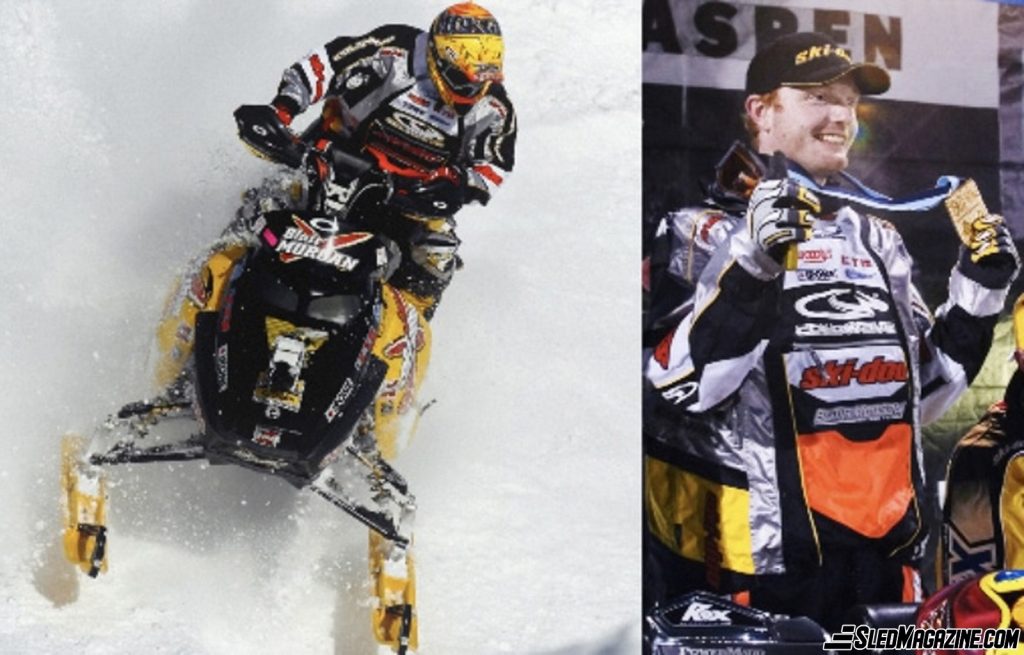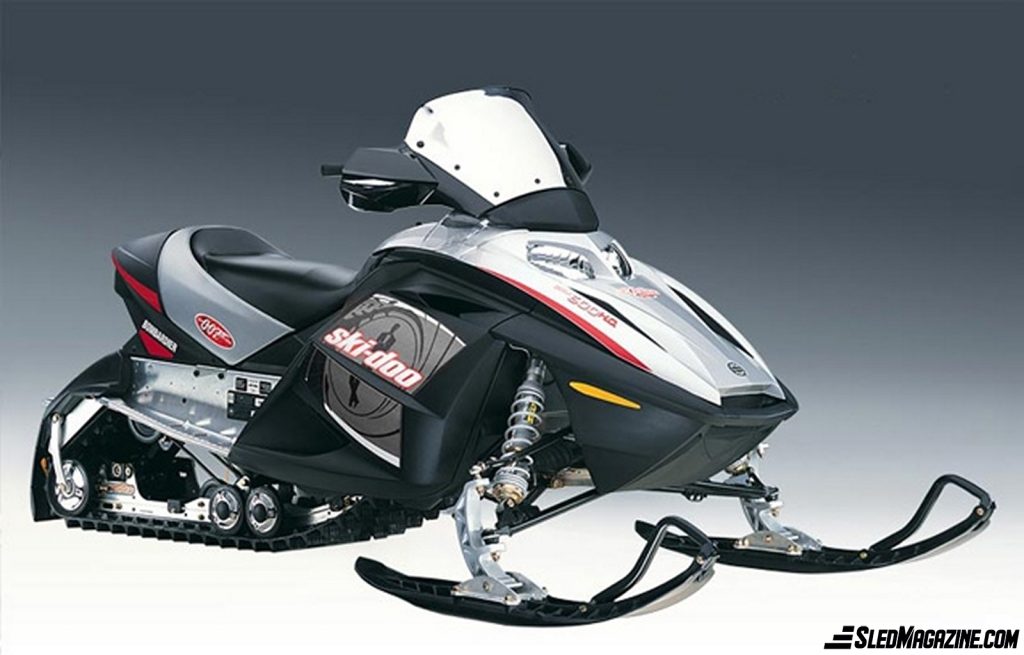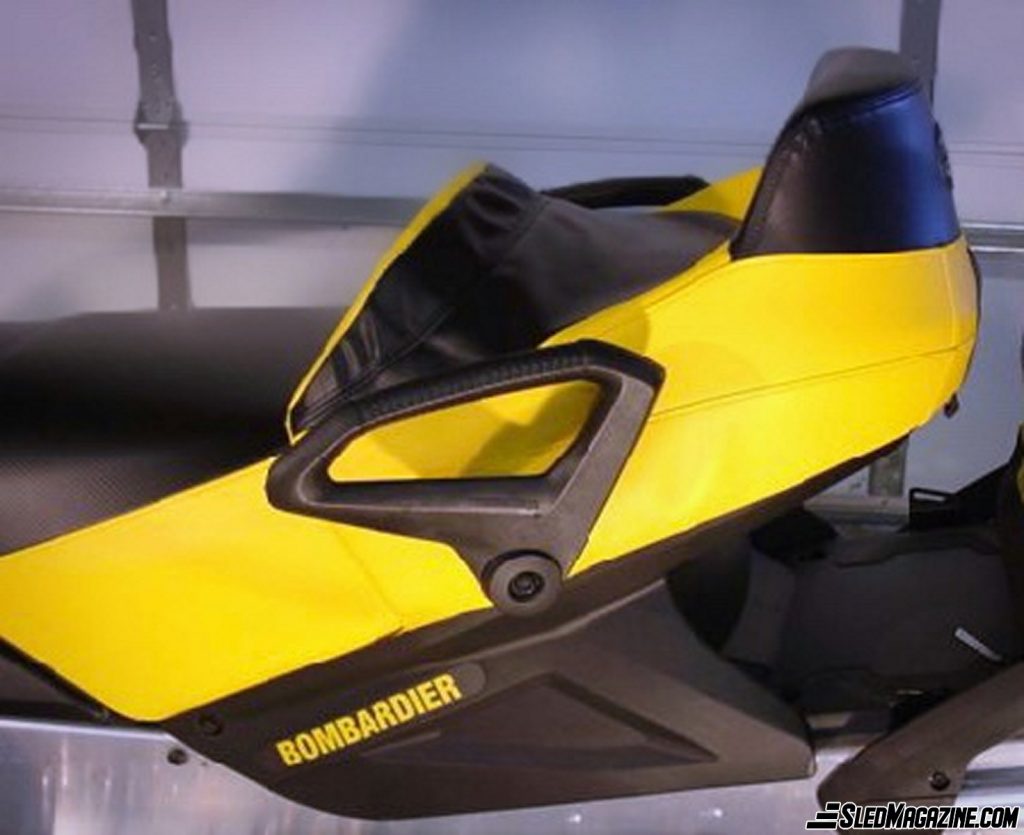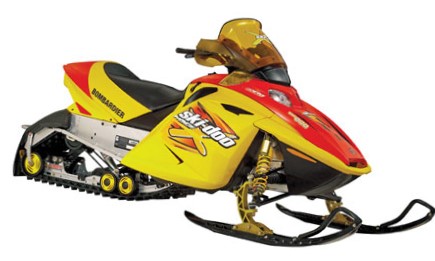Table of contents
ToggleIf you ask a majority of experienced snowmobilers about one of the greatest innovations in the history of snowmobiling, one answer is sure to come up repeatedly. Clearly, the introduction of the REV chassis for the 2003 model year at Ski-Doo was a big turning point.
The REV was a ground-breaking design; at one level or another, it became the basis for all subsequent chassis designs from all snowmobile brands. Sure, it seemed strange at first, as it turned the whole foundation of snowmobiling on its head, which was developed on the basis of a low center of gravity.
It appeared on the snow cross circuit in 2002 and was very competitive, with Blair Morgan at the helm. Nevertheless, the place of the original 2003 REV design in the market in the history of snowmobiling cannot be denied.

REV chassis: they broke the mould!
However, Ski-Doo’s aptly named REV chassis was different. Its basic principle was mass centralization. It broke the mould and changed the way riders sat and rode their snowmobiles: it was designed for the aggressive trail rider who wanted to cut through bumpy trails or jump higher and farther with ease.
The REV design was based on a pyramid chassis, with frame elements that resembled a pyramid. BRP officials said the original design increased torsional rigidity by 600% over the ZX chassis. It was also lighter than its predecessor.
A cutting-edge suspension.
This new design also allowed engineers to incorporate a wishbone front suspension. The suspension was called Response Angle Suspension (RAS). The front shock towers bolt to the frame, allowing the suspension to communicate with the pyramid frame. When the front absorbs a bump, the impact is transferred through the suspension and into the chassis and pyramid frame.
The SC-10 III rear suspension, which was introduced for the 2002 model year, gets additional travel (now 14.5 inches), but the geometry is virtually unchanged. However, this suspension connected differently to the chassis.
A special… backside!
The tunnel was shorter than normal and a pivoting closure panel connected directly to the rear wheels with an aluminum bracket. As the suspension lowered, this closure area swung down.
I would be remiss if I didn’t mention the rear of the 2003 MX Z with its famous “beaver tail”. This one was not unanimous in its design so much so that some people designed kits to replace it in a more conventional shape. This beaver tail was originally installed to help keep the snow in the tunnel and thus keep the engine at a lower temperature.

A marked presence in a James Bond film.
Ski-Doo made an appearance in the movie “Die Another Day” by the world’s most famous secret agent. Bombardier provided 14 snowmobiles and high-end Ski-Doo apparel for the film.
The cornerstone of the Bombardier-007* partnership is the limited-edition Ski-Doo MX Z-REV 007 snowmobile. Bombardier designers kept James Bond’s special agent in mind when developing the look of this special edition model: black and silver bodywork accented with red and chrome. Just like the smart gadgets that master engineer Q and his team of experts have been designing for the world’s favorite spy for over 40 years, the Bombardier MX Z-REV 007 snowmobile was equipped with all the latest technological innovations.
One thousand special editions Bombardier Ski-Doo MX Z-REV 007 snowmobiles have been made available for sale to customers in Canada, the United States and Scandinavia.
An innovative design!
In its unique and innovative design, the rider’s passage to the front is facilitated by a unique fuel tank design. The filler hole is always in front of the driver, but the tank has a narrow column at the front, then lowers and passes partially under the seat.

Another unique feature should not be overlooked. The 1+1 passenger seat configuration was a great innovation. It was simply an optional addition that was attached to the back of the standard seat with a simple quick release.
With the new REV chassis, Ski-Doo engineers have simply rethought the ergonomic concept of how and where a rider sits. For years, snowmobilers have had their butts sitting on the rear arm of the rear suspension, their legs stretched forward and their feet in angled footrests.
A driving position in full mutation!
At that time, snowmobiling was changing. Riders were standing upright (at least, they were trying as best they could) ready to absorb bumps more effectively with their legs. However, until the REV came along, there was no chassis that offered an effective riding position for this style of riding.
With the introduction of the REV chassis, the driver sat 12 inches further forward than conventional models. The driver’s legs are bent at a 90-degree angle at the knees, with feet flat on the running boards and toes tucked in for better grip.
A motorcycle-inspired riding position.
The change in rider position was part of a complete redesign of the chassis. It all started five years before its introduction when some Ski-Doo snowmobile engineers, who were also dirt bike riders, started talking about how they sat differently on their bikes compared to their snowmobiles.
When Ski-Doo engineers began planning the REV, they had several goals: better ergonomics, more chassis rigidity, more mass centralization, a new front suspension, easier mechanical parts and weight reduction.
Unlike what we were used to, the REV chassis did not have a conventional hood. It was designed with two large side panels that swung outward for easy access to the engine compartment. They could also be removed for better access to the clutches, chain case and other mechanical parts.

The front hood itself is a small panel that was held together by grommets. The hood and side panels were all sculpted around the mechanical parts, allowing the snowmobile to have a low profile while reducing weight. If we look at the front of the hood for a moment, we’ll find similarities to Darth Vader’s helmet. Do the exercise, and you’ll probably get the same feeling!
My personal opinion.
I remember it took me a while to adjust to the lean when I was attacking a turn. On this new REV with its centralized mass, I quickly learned that I had to lean forward and out instead of leaning back and out. It was a strange feeling at first, but I quickly acclimated to the benefits it provided.
One of the aspects that bothered me at the time in its original version was the design of the hood which was in constant contact with my knees. This limited my movement and aggressive cornering. Although I saw it as a significant improvement, I was not 100% sold on the concept and saw several areas for improvement.
However, the speed at which I could lift my body for better impact absorption was a huge step forward. It wasn’t just my back taking the brunt of the impact anymore, I was able to spread the impact to my more backward-bent legs. This new frame was definitely faster and more ergonomic in every way.
Conclusion
In conclusion, the arrival of the REV chassis at Ski-Doo is a year that must be taken into consideration in the evolution of the snowmobile. Regardless of the manufacturer, it dictated the path for the snowmobiles that followed. In truth, José Boisjoli was a visionary when he said that the ASR would change the industry. Look around you, there is a definite influence of the REV in the way we ride snowmobiles today. This fact is undeniable!
More Ski-Doo articles here:
- Rock Suspension: The affordable, high-performance solution to Ski-Doo Expedition suspensions
- Ski-Doo Skandic Sport 600 EFI: A snowmobile with a bright future!
- Ski-Doo Summit X 154 2023 Trial Announcement


